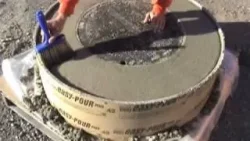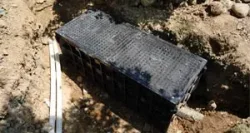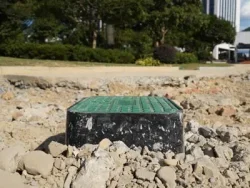2022-03-28
We should not underestimate the weight of cast iron manhole covers and the difficulty in opening them. They will rattle when vehicles pass them, but Manhole covers are very heavy. Challenging to remove one conceitedly can result in serious back, neck, or spine injury. safety should always be the top priority. Covers are rough, rusty, and sometimes have sharp edges. Be sure that you’re wearing heavy-duty gloves to protect your hands from injury when lifting manholes covers. Pay close attention to keep your hands clear of pinch points. Also, make sure to straddle the manhole cover and lift with your back straight and your knees bent. A hydraulic arm crane works much better, however, that cost is higher.

Install the lightweight manhole cover and have the right tool to complete this task safely is the aim. Using a screw-up tool to unfasten the fixing hole, and a manhole lifter (manhole key) to buckle the lifting hole and. Manhole keys come in a variety of sizes and styles. The multi-task tools can also lift a composite manhole cover. Firstly ensuring the edge of the manhole cover is clear of dirt, debris, or other sediments that cause the manhole lid to bind in the hole making it more difficult to dislodge. Using a hammer might break the lid and is not only costly but also dangerous.
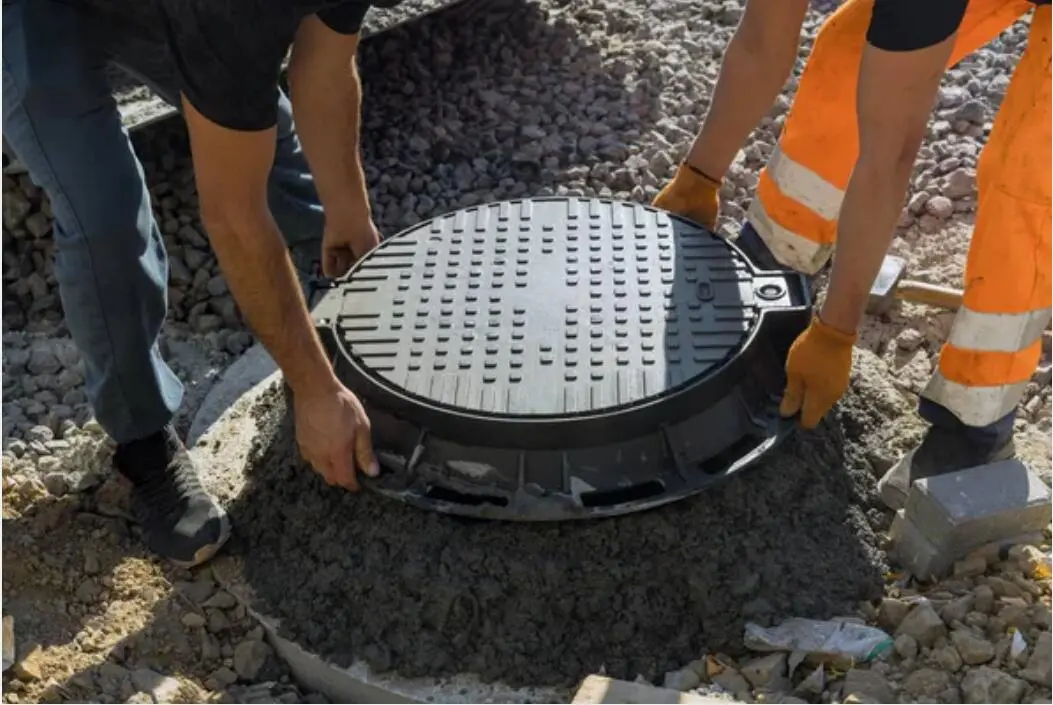
Keep Safe after Entering a Manhole
A manhole is a chamber connected to an underground world of a sewer pipe system or cable networks where toxic gas rests, slippery foothold and, sludge or wastewater that has bacteria or virus, chemical aggressive solutions. To prevent hazards, companies whose employees must enter sewer manholes regularly train their crews to use personal protective equipment such as hard hats, respirators, gloves, boots, as well as get them well learned the testing procedure of gas detectors, safety operation procedures, emergency preparedness, and the role of a standby worker.
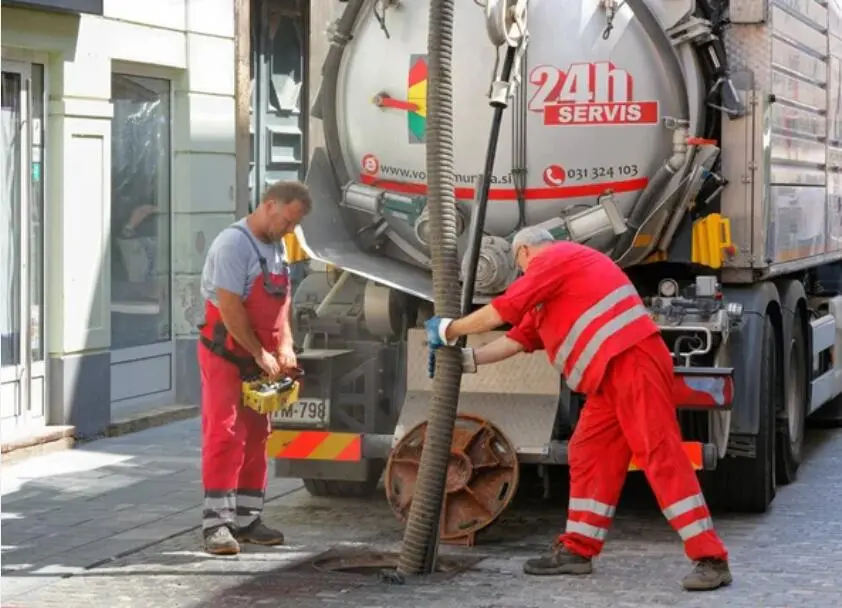
Gas Concentration Testing and Continuous Monitoring
The most common toxic gas in a manhole is Methane (CH4) and ethane, Carbon monoxide (CO), Hydrogen Sulfide (H2S),
Carbon monoxide, The colorless and odorless gas is a lethal silent killer– is generated when coal /charcoal is burnt in poorly ventilated areas. Trachea rupture in pharmaceutical or chemical equipment. The concentration of CO is divided into several levels, 100 >ppm, the worker must get out of the manhole within 90 minutes or less, 200 >ppm, the worker should wear respirators when they working, 300 >ppm, Slight headache, tiredness, dizziness, nausea after within 15 minutes, cardiovascular and brain unfitness after hours, 1000 >ppm, Dizziness, nausea, and convulsions within 30 minutes. High risk of unconsciousness and death within hours, 3000 >ppm, Unconsciousness within 5 minutes and high risk of sudden death, 6000 >ppm, Unconsciousness and sudden death within a minute. CO concentration is the most vital of the gas monitoring schedule.
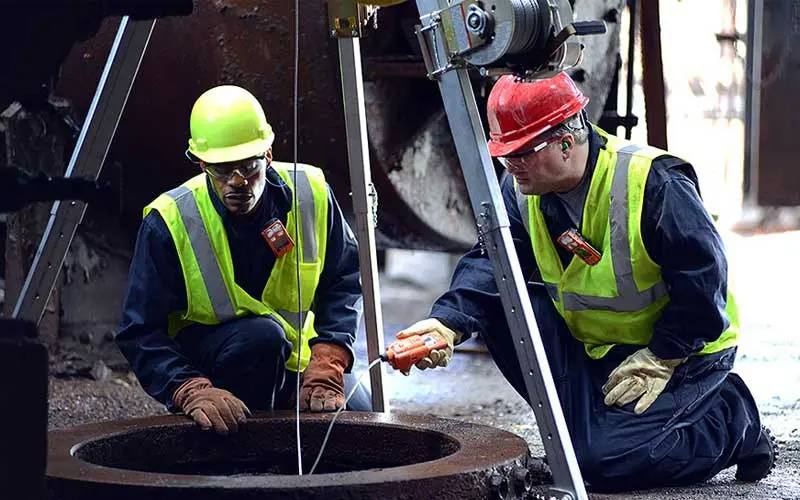
Methane and ethane are commonly generated when organic matter is decomposed by a variety of bacterial processes from trash points or cesspits. They also exist in paint or chemical raw materials. Leakage or rupture of natural gas pipelines can also cause the gas to accumulate. It is a colorless, extremely flammable, and explosive gas that can cause fire and explosion. The accumulation of methane in a poorly ventilated area will displace normal air and result in an oxygen-deficient environment. The presence of methane causes oxygen levels in the air to drop, leading to suffocation.
Ethane exposure has been found to be associated with health hazards such as cardiovascular disease, cancer, reproductive effects, mutational changes, neurotoxicity, and sensitization. Methane and ethane are Colorless, odorless flammable gases and it is fatal to ignore them.
Hydrogen sulfide has a characteristic rotten egg smell which can be detected at very low levels, well below those that are known to cause health effects. Smelling hydrogen sulfide does not mean that it will harm your health. The smell can cause worry, anxiety, and resentment, which cause the sewage operator low concentration to work and ignore other hazardous factors.
Different gases are stratified in a manhole based on their densities relative to air. For example, methane is lighter than air and will be found near the top. On the other hand, hydrogen sulfide is heavier than air and will be found around the bottom, whereas carbon monoxide is slightly lighter than air and will stay in the vicinity of the release. So, testing of the atmosphere inside the drainage should be done from the top to the bottom of the space, preferably at about 1-meter intervals. Sampling for a few minutes at each location is required as there will be a time lag for the gas to be pumped from the sampling probe to the monitoring equipment.

Air monitoring does not end with the pre-entry test. Since atmospheric conditions within a drainage workspace can change rapidly, continuous air monitoring is required to ensure that the air quality remains acceptable throughout the work. A 're-entry' test should be conducted if the workers have temporarily left the space. In fact, re-entry testing and pre-entry testing should be performed in exactly the same manner and should be considered as equally important. In case the alarm of the air monitoring equipment is activated or any other indication of danger is observed, workers should leave the workspace immediately according to emergency procedures.
How to Install Handhole and Manhole that Reduce your 20% Cost
